Modulenotfounderror No Module Named Yaml
ModuleNotFoundError is a common error encountered by Python developers when attempting to import a module that is not found or installed in their environment. One specific error that developers may come across is the “No module named ‘yaml'” error, indicating that the required YAML module is missing or not properly installed.
Definition and Explanation of ModuleNotFoundError
ModuleNotFoundError is an exception raised when an imported module cannot be found in the current Python environment. It occurs when the interpreter is unable to locate the specified module’s file or package. This error can hinder the execution of a Python script, as the required functionality from the missing module would be inaccessible.
Explanation of How Modules Work in Python
Modules in Python are reusable files containing a collection of functions, classes, and variables that can be imported and utilized in other parts of a program. By organizing code into modules, developers can improve code reusability and maintainability. The import statement in Python allows developers to access pre-existing modules or custom-built modules within their code.
Explanation of the Possible Causes of ModuleNotFoundError
ModuleNotFoundError can arise due to various reasons, including:
1. Uninstalled Module: The required module may not be installed in the Python environment. Without proper installation, Python cannot locate and import the module.
2. Incorrect Module Name: The module name specified in the import statement could be misspelled or incorrect, leading to the inability to find the module.
3. Incorrect Module Path: If the module is installed but resides in a non-standard location, the Python interpreter might not be able to locate it.
4. Version Incompatibility: The module could be designed for a different version of Python, causing it to be incompatible with the current interpreter.
What is YAML?
YAML, short for “YAML Ain’t Markup Language,” is a human-readable data serialization format. It is often used in configuration files, data exchange, and other applications requiring structured data representation. YAML uses indentation and special characters to represent data and hierarchal structures.
Explanation of YAML’s Role in Python
In Python, the YAML language plays a crucial role in reading and writing structured data. The PyYAML library provides a Python interface for parsing and emitting YAML files, allowing developers to interact with YAML data easily. This library enables programmers to convert YAML-formatted files into Python objects, and vice versa.
Examples of How YAML is Used in Python
YAML’s readability and versatility make it a preferred choice when dealing with configuration files or data exchange. Here are a few examples of how YAML is commonly used in Python:
1. Configuration Files: Many applications utilize YAML files to store configuration parameters, such as database connection details, logging settings, or API keys. These YAML configuration files can be easily parsed and loaded into Python objects.
2. Data Exchange: When exchanging data between different systems or programming languages, YAML provides a standardized format that is both human-readable and machine-processable. Developers can use the PyYAML library to convert data between YAML and Python objects seamlessly.
3. Testing Data: YAML files can serve as a convenient way to store test data or test cases. By storing test data in YAML format, it can be easily modified or expanded without the need for altering the code.
How Does ModuleNotFoundError Relate to YAML?
The error message “No module named ‘yaml'” relates to the inability of the Python interpreter to find and import the YAML module. When working with YAML in Python, importing the necessary YAML module is crucial to access its functionality. Without the module, YAML-related tasks cannot be performed, leading to the ModuleNotFoundError.
Explanation of the Relationship Between ModuleNotFoundError and YAML
When encountering a ModuleNotFoundError for YAML, it means that the required YAML module is missing or incorrectly installed. Without resolving this error, any attempt to import YAML-related modules or use YAML functionality will fail.
Discussion of How YAML Modules are Imported in Python
To import the YAML module in Python, the following import statement is typically used:
“`python
import yaml
“`
The “import yaml” statement allows Python to recognize and access the YAML module, making its functionality available for use within the code.
Explanation of Common Errors Resulting in ModuleNotFoundError for YAML
Various errors can lead to a ModuleNotFoundError for YAML. Some common mistakes include:
1. Missing YAML Library: If the PyYAML library is not installed in the Python environment, the import statement for ‘yaml’ will fail.
2. Typos or Misspellings: In the import statement, any typographical errors or misspellings will result in ModuleNotFoundError.
3. Incorrect YAML Library Version: Different versions of the PyYAML library exist, and compatibility issues may arise if an outdated or incompatible version is installed.
Troubleshooting ModuleNotFoundError for YAML
To fix the ModuleNotFoundError for YAML, follow these troubleshooting steps:
1. Check if the YAML Library is Installed: Ensure that the PyYAML library is installed in your Python environment. The “pip install pyyaml” command can be used to install it.
2. Verify the Correct Import Statements for YAML Modules: Review the import statements in your code and ensure that the correct module names are used, such as “import yaml”.
3. Check for Typos or Misspellings in Import Statements: Carefully inspect the import statements for any misspelled module names or typos. Correcting these errors can resolve the ModuleNotFoundError.
Common Mistakes Leading to ModuleNotFoundError for YAML
Identifying common mistakes that can lead to ModuleNotFoundError for YAML can help troubleshoot and prevent this error from occurring. Some common mistakes include:
1. Misspelling the Module Name in the Import Statement: Double-check the spelling of the module name in the import statement, ensuring it matches the module’s actual name.
2. Incorrect Installation or Update of the YAML Library: If the PyYAML library is not installed or not correctly updated, importing YAML modules will fail. Ensure the library is installed correctly or try reinstalling it.
3. Importing the Wrong Module within the YAML Library: YAML libraries may contain multiple modules. Make sure you import the specific module you require, using the appropriate import statement, such as “import yaml”.
Alternative Solutions for ModuleNotFoundError for YAML
If the ModuleNotFoundError for YAML persists, consider the following alternative solutions:
1. Installing the Missing YAML Library: If the PyYAML library is not installed, install it using the “pip install pyyaml” command in your command prompt or terminal.
2. Upgrading the Existing YAML Library to the Latest Version: If you already have an older version of the PyYAML library installed, upgrading it to the latest version may resolve compatibility issues.
3. Using a Virtual Environment to Manage Module Dependencies: Virtual environments, such as Python’s virtualenv or Anaconda’s Conda, provide isolated environments to manage specific module dependencies. Setting up a virtual environment and installing the YAML library within it can help avoid conflicts and missing module errors.
In conclusion, the ModuleNotFoundError for YAML occurs when the Python interpreter cannot locate or import the YAML module. It can result from missing or incorrectly installed libraries, typos in import statements, or version incompatibilities. By following troubleshooting steps, correctly installing the YAML library, and verifying import statements, developers can effectively resolve the ModuleNotFoundError and successfully utilize YAML in their Python projects.
🐍 Fix Modulenotfounderror (No Module Named Yaml) Python Import Error (If Installed / If Exists)
How To Install Yaml Python Module?
YAML is a human-readable data serialization format used for various purposes, such as configuration files and data interchange between programming languages. Python, being a versatile programming language, provides various modules to interact with different file formats, and YAML is no exception. In this article, we will walk you through the process of installing the YAML Python module, as well as provide answers to frequently asked questions. So let’s dive in!
Installing the YAML Python Module:
To start using YAML in your Python projects, you need to have the YAML module installed on your system. Follow these steps to install it:
Step 1: Check Python Version
Before proceeding with the installation, ensure that you have Python installed on your system. To check the version, open your terminal or command prompt and type the following command:
“`
python –version
“`
If you see the output displaying the Python version (e.g. Python 3.9.2), you are good to go. If not, visit python.org and download the latest version of Python suitable for your operating system.
Step 2: Install YAML Module
Once you have verified your Python installation, the next step is to install the YAML module. Open your terminal or command prompt and execute the following command:
“`
pip install pyyaml
“`
The command above uses pip, the default package manager for Python, to fetch and install the latest version of the YAML module. If the installation is successful, you will see the installation progress along with the version number.
Step 3: Verify Installation
To ensure that the YAML module is installed correctly, you can verify it by executing a simple Python script. Open your preferred text editor and create a new Python file with a ‘.py’ extension. Then add the following code:
“`python
import yaml
data = {‘name’: ‘John’, ‘age’: 25}
yaml_data = yaml.dump(data)
print(yaml_data)
“`
Save the file and run it using the Python interpreter. If you see the YAML representation of the `data` dictionary printed on the console, congratulations! You have successfully installed and imported the YAML module.
Frequently Asked Questions (FAQs):
Q1: Can I install multiple versions of the YAML module?
A: No, Python allows installing only a single version of a module. Installing a new version will overwrite the existing one.
Q2: Does the YAML module support the latest YAML version?
A: Yes, the YAML module supports the latest YAML version and is regularly updated to ensure compatibility.
Q3: Do I need to install any additional dependencies for the YAML module?
A: No, the YAML module does not have any external dependencies. Installing it using pip will fetch all necessary components.
Q4: Are there any alternatives to the YAML module in Python?
A: Yes, Python offers alternative libraries like `ruamel.yaml` and `pyyaml` for working with YAML. However, `pyyaml` is the most commonly used and well-maintained module.
Q5: Which Python versions are compatible with the YAML module?
A: The YAML module is compatible with both Python 2.x and Python 3.x versions. However, Python 2.x is no longer actively supported, so it is recommended to use Python 3.x.
Q6: How can I update the YAML module to the latest version?
A: You can use the following command to update the YAML module:
“`
pip install –upgrade pyyaml
“`
Q7: Can I use the YAML module in web applications?
A: Absolutely! You can use the YAML module in web applications developed using Python frameworks like Django or Flask.
Q8: Is the YAML module thread-safe?
A: Yes, the YAML module is thread-safe, which means you can use it simultaneously from multiple threads without any issues.
In conclusion, the YAML Python module is a powerful tool for working with YAML files in Python programming. By following the step-by-step installation guide provided in this article, you can start utilizing the YAML module in your projects. Additionally, the FAQs section offers answers to common queries that may arise during your exploration of the YAML module. Happy codin
How To Import Yaml In Python?
YAML, which stands for “YAML Ain’t Markup Language,” is a human-readable data serialization format. It is often used to store configuration settings or represent data structures in a simple and intuitive way. In Python, YAML can be easily imported and used to load YAML files or convert YAML data into native Python objects. This article will cover the various methods and libraries available for importing YAML in Python, along with example code snippets and common FAQs.
Importing YAML in Python
Python provides several libraries for importing YAML. Each library offers different features and functionalities, so let’s explore some of the popular choices.
1. PyYAML Library:
PyYAML is the most widely used library for working with YAML in Python. It supports YAML 1.1 standard and offers a simple API for parsing and emitting YAML. To import YAML using PyYAML, you first need to install the library by running the following command:
“`
pip install pyyaml
“`
Once installed, you can import PyYAML using the following code snippet:
“`python
import yaml
“`
PyYAML provides two main methods for importing YAML: `load()` and `safe_load()`. The `load()` method loads a YAML document and returns a Python object, while the `safe_load()` method provides a safer loading mechanism by restricting the loaded data to basic Python data types.
Here’s an example of using PyYAML to load a YAML file:
“`python
with open(‘config.yaml’, ‘r’) as file:
config = yaml.load(file, Loader=yaml.FullLoader)
“`
2. ruamel.yaml Library:
ruamel.yaml is a YAML parsing library that provides enhanced features compared to PyYAML. It preserves the comments present in the original YAML file and supports round-tripping, where the loaded YAML can be modified and dumped back to a file while preserving the structure and comments. To import YAML using ruamel.yaml, you need to install the library by running the following command:
“`
pip install ruamel.yaml
“`
You can then import ruamel.yaml with the following code snippet:
“`python
import ruamel.yaml
“`
To load a YAML file using ruamel.yaml, you can use the following code:
“`python
yaml = ruamel.yaml.YAML(typ=’safe’)
with open(‘config.yaml’, ‘r’) as file:
config = yaml.load(file)
“`
3. PyYAML with FullLoader:
Starting from PyYAML version 5.1, a safer method called `FullLoader` is added. It automatically applies the correct tag constructors and provides a more secure approach compared to the default `Loader`.
“`python
import yaml
with open(‘config.yaml’, ‘r’) as file:
config = yaml.load(file, Loader=yaml.FullLoader)
“`
Frequently Asked Questions (FAQs)
Q1: What is the difference between YAML.load() and YAML.safe_load()?
A: The `load()` method in PyYAML loads any YAML document, which means it can execute arbitrary code if the input YAML is malicious. On the other hand, `safe_load()` only allows basic Python data types, making it safer to use when loading untrusted YAML.
Q2: Is PyYAML compatible with YAML 1.2 standard?
A: PyYAML supports YAML 1.1 standard, which is the most commonly used version. However, it does not support the full YAML 1.2 specification.
Q3: Can I modify the loaded YAML and save it back to a file?
A: Yes, you can modify the loaded YAML data and dump it back to a file using PyYAML or ruamel.yaml. This is particularly useful when working with configuration files that need to be updated dynamically.
Q4: Are there any limitations when importing YAML in Python?
A: One limitation to consider is that YAML does not support certain data types, such as complex numbers or custom objects. When loading YAML, these unsupported types will be converted to strings or dictionaries if possible.
Q5: Can I serialize Python objects to YAML?
A: Yes, both PyYAML and ruamel.yaml provide methods to convert Python objects into YAML format. This allows easy data interchange between Python and other programming languages that support YAML.
In conclusion, YAML is a versatile data serialization format that can be easily imported into Python. This article covered the main libraries and methods for importing YAML, including PyYAML, ruamel.yaml, and FullLoader. We also answered some common FAQs related to importing YAML. With these tools and insights, you can effectively work with YAML data in your Python projects.
Keywords searched by users: modulenotfounderror no module named yaml Pip install yaml, Install yaml Python Windows, Read YAML file Python, Unable to find python module, Conda install pyyaml, Conda install YAML, Import requests Python 3, Pyyaml github
Categories: Top 45 Modulenotfounderror No Module Named Yaml
See more here: nhanvietluanvan.com
Pip Install Yaml
Python is a versatile programming language that offers a wide range of libraries and packages to simplify various tasks. One such package is YAML, which stands for “YAML Ain’t Markup Language.” YAML is a human-readable data serialization format that is commonly used for configuration files, data exchange, and storing structured data. In this article, we will explore how to install YAML in Python using the pip package manager.
What is YAML?
Before we delve into installing YAML, let’s briefly understand what it is and why it is widely used. YAML is a lightweight, easy-to-read data format that focuses on data presentation rather than document markup. It was initially designed to be a more user-friendly alternative to XML and JSON, providing a simpler syntax for humans to understand and work with.
YAML files consist of key-value pairs, lists, and nested structures that are represented using indentation. This structure makes YAML files more readable and less cluttered compared to other data formats. Its simplicity and readability have made YAML a popular choice for configuration files in various applications, like DevOps tools (such as Ansible and Kubernetes) and web frameworks (like Flask and Django).
Installing YAML with pip
To work with YAML data in Python, we need to install the PyYAML package, which provides a comprehensive YAML support for Python. We can use the pip package manager, which is the standard tool for installing Python packages, to install PyYAML. Here’s how to do it:
Step 1: Check if pip is installed
Before installing PyYAML, we need to ensure that pip is installed on our system. Pip usually comes bundled with Python installations from version 2.7.9 onwards. To check if pip is installed, open a terminal or command prompt, and enter the following command:
$ pip –version
If pip is installed, it will display the version number; otherwise, you will need to install pip before proceeding.
Step 2: Install PyYAML
Once we have pip installed, we can proceed with installing PyYAML. To install PyYAML, open a terminal or command prompt, and enter the following command:
$ pip install pyyaml
This command will fetch the latest version of PyYAML from the Python Package Index (PyPI) and install it on your system. Depending on your system configuration, you may need administrative privileges (using sudo) to install packages globally.
Verifying the Installation
To ensure that PyYAML is installed correctly, we can write a simple Python script that uses the PyYAML library. Open a text editor and create a new file called “verify_yaml_installation.py.” Then, copy the following code into the file:
“`python
import yaml
# Sample YAML data
data = “””
key1: value1
key2: value2
key3:
– item1
– item2
“””
# Load the YAML data
parsed_data = yaml.load(data, Loader=yaml.FullLoader)
# Access and print the values
print(parsed_data[“key1”])
print(parsed_data[“key3”][0])
“`
Save the file and run it using the Python interpreter:
$ python verify_yaml_installation.py
If you don’t encounter any errors, and the script successfully prints the values, it means that PyYAML is installed correctly, and you are ready to use it in your Python projects.
FAQs
Q: Are there any alternative libraries for working with YAML in Python?
A: Yes, apart from PyYAML, there are other libraries available, such as ruamel.yaml and `yaml` module from the standard library. However, PyYAML is the most commonly used and widely supported library for YAML in Python.
Q: Is YAML available in other programming languages?
A: Yes, YAML is available in several programming languages, including Ruby, Java, JavaScript, Perl, and many others. It is a language-agnostic data format widely adopted in the coding community.
Q: How can I handle complex YAML structures?
A: PyYAML provides powerful APIs for handling complex YAML structures. It allows you to load YAML data into Python objects (such as lists and dictionaries) and vice versa. You can manipulate the data using Python’s rich toolset and generate YAML output as needed.
Q: Can I use YAML for configuration files in my project?
A: Absolutely! YAML is widely used for configuration files due to its simplicity and readability. Many popular frameworks, libraries, and tools offer support for YAML-based configurations. It provides a flexible and human-friendly way to define various settings and options.
In conclusion, YAML is a versatile data format that offers a simpler and more readable alternative to markup languages like XML and JSON. By installing PyYAML using pip, Python developers can seamlessly work with YAML files and utilize its benefits. YAML has gained popularity for its ease of use and widespread adoption, making it an excellent choice for various applications.
Install Yaml Python Windows
YAML, short for “YAML Ain’t Markup Language,” is a human-readable data serialization format. It is commonly used for configuration files, data exchange between programming languages, and storing or transmitting structured data. YAML has gained popularity due to its simplicity and readability, making it a preferred choice for many developers. In this article, we will guide you through the process of installing YAML in Python on the Windows operating system.
Step 1: Install Python
Before we can install YAML, we need to ensure that Python is installed on our Windows machine. Python is a widely-used programming language that provides a flexible and easy-to-use platform for various purposes, including YAML processing. To install Python, follow these steps:
1. Visit the official Python website at www.python.org.
2. Navigate to the “Downloads” section.
3. Choose the appropriate Python version for your Windows system (32-bit or 64-bit).
4. Click on the download link and the installation file will start downloading.
5. Once the download is complete, run the installation file.
6. Follow the on-screen instructions to complete the installation process.
Step 2: Install the PyYAML Library
Now that we have Python installed, we can proceed with installing the PyYAML library. PyYAML is a Python module that enables the parsing and serialization of YAML files within Python programs. To install PyYAML, follow these steps:
1. Open a command prompt by pressing “Windows key + R” and typing “cmd” (without quotes). Press Enter.
2. In the command prompt, type the following command and press Enter to install PyYAML using the pip package manager:
“`
pip install pyyaml
“`
This command will download and install the latest version of PyYAML from the Python Package Index (PyPI).
3. Wait for the installation to complete. You will see a success message when the installation is finished.
Step 3: Verify the Installation
To verify that the YAML module has been successfully installed in Python, we can run a simple program that utilizes the PyYAML library. Follow these steps:
1. Open a text editor and create a new file with the “.py” extension.
2. Copy and paste the following code into the file:
“`python
import yaml
data = {‘name’: ‘John Doe’, ‘age’: 25}
yaml_data = yaml.dump(data)
print(yaml_data)
“`
This program creates a dictionary, serializes it to YAML using the PyYAML library, and prints the resulting YAML data.
3. Save the file and remember its location.
4. Open a command prompt and navigate to the directory where you saved the Python file.
5. Run the Python script by typing the following command and pressing Enter:
“`
python your_script_name.py
“`
Replace “your_script_name.py” with the actual name of your file.
6. If the installation was successful, you should see the YAML data printed in the console.
FAQs:
Q1: Can I install YAML without installing Python on Windows?
A1: No, Python is a prerequisite for installing YAML on Windows. Since YAML is a Python library, it relies on the Python interpreter to function properly.
Q2: Is PyYAML the only library available for working with YAML in Python?
A2: No, PyYAML is one of the most popular libraries for YAML processing in Python, but there are other alternatives available, such as ruamel.yaml and yamlizer. You can choose the library that best suits your needs.
Q3: How do I upgrade PyYAML to the latest version?
A3: To upgrade PyYAML to the latest version, you can use the pip package manager by running the following command in a command prompt:
“`
pip install –upgrade pyyaml
“`
This command will automatically download and install the latest version of PyYAML.
Q4: Can I use YAML with other programming languages besides Python?
A4: Yes, YAML is a language-independent format, meaning it can be used with various programming languages. Other programming languages also provide their own YAML parsers and serializers to work with the format.
Q5: Are there any YAML editors or tools available for Windows?
A5: Yes, there are several YAML editors and tools available for Windows, such as Notepad++, Visual Studio Code with YAML extensions, and YAMLPad. These tools provide syntax highlighting, auto-completion, and other helpful features for working with YAML files.
Conclusion:
Installing YAML in Python on Windows enables developers to easily parse and serialize YAML data within their Python programs. By following the steps outlined in this article, you can install Python, install the PyYAML library, and verify the installation. With YAML being a widely used data serialization format, mastering its usage in Python opens up a world of possibilities for developers.
Read Yaml File Python
YAML, short for “YAML Ain’t Markup Language,” is a human-readable data serialization format. It is often used for configuration files, data exchange between programming languages, and storing hierarchical data structures. Python offers many libraries to interact with YAML files, which allow us to read, write, and manipulate YAML data. In this article, we will explore how to read YAML files in Python and provide a comprehensive guide to help you on your journey.
Understanding YAML Format:
Before diving into how to read YAML files in Python, let’s get acquainted with the structure and syntax of YAML. YAML relies on indentation and uses colons to denote key-value pairs. Take a look at the following example:
“`yaml
# example.yaml
name: John Doe
age: 30
address:
street: 123 Main St
city: New York
country: USA
“`
In this example, we have a YAML file named `example.yaml` that represents a person’s profile. The keys are `name`, `age`, and `address`, while their corresponding values are `John Doe`, `30`, and a nested dictionary holding the address details.
Setting Up Python and PyYAML:
To read YAML files in Python, we need to install the PyYAML library. Open your command-line interface and run the following command to install PyYAML:
“`shell
pip install pyyaml
“`
Once installed, we can import the `yaml` module within our Python script to work with YAML files effectively.
Reading a YAML File:
Now that we have the necessary tools, let’s start with the basics of reading a YAML file in Python. We will use the `yaml.safe_load()` function to load the YAML data and convert it into a Python object.
“`python
import yaml
with open(‘example.yaml’, ‘r’) as file:
yaml_data = yaml.safe_load(file)
“`
In this code snippet, we open the YAML file `example.yaml` in read mode using the `open()` function. Then, we use the `yaml.safe_load()` function to load the YAML data into `yaml_data`. Now, we can access the data as a Python dictionary and perform any necessary operations on it.
Accessing YAML Data:
After successfully loading the YAML data, we can extract the values using dictionary-like access. Let’s explore some common scenarios:
“`python
name = yaml_data[‘name’]
age = yaml_data[‘age’]
address = yaml_data[‘address’]
street = address[‘street’]
city = address[‘city’]
country = address[‘country’]
“`
In this code snippet, we assign the corresponding values to Python variables. In this way, we can easily access and utilize the YAML data within our Python script.
Handling Nested YAML Data:
YAML files often contain complex data structures and nested data. To handle nested YAML data, we can use the same dictionary-like access as shown in the previous example. Consider the following YAML file:
“`yaml
# nested_example.yaml
fruits:
– apple
– banana
– orange
“`
Let’s retrieve the fruit list from the above YAML data:
“`python
fruits = yaml_data[‘fruits’]
“`
In this case, `fruits` will be assigned a Python list: `[‘apple’, ‘banana’, ‘orange’]`. We can then iterate over this list or perform operations as needed.
FAQs
Q: Can I read multiple YAML files at once using Python?
A: Yes, you can read multiple YAML files using a loop or by specifying multiple file paths. Simply repeat the reading process for each YAML file you wish to include.
Q: How can I handle YAML files that contain sensitive information, such as passwords?
A: When YAML files contain sensitive information, it is crucial to ensure proper security measures. You can store such files in secure locations, encrypt them, or apply access control measures to protect sensitive data.
Q: Is it possible to validate the structure of a YAML file in Python?
A: Absolutely! The PyYAML library provides a `yaml.safe_load()` function for loading and parsing YAML files. If the YAML file has any syntax or structural issues, an error will be raised, allowing you to handle such occurrences programmatically.
Q: Are there any other Python libraries for working with YAML files?
A: While PyYAML is the most widely used library for YAML processing in Python, there are alternative libraries such as ruamel.yaml and PyYQ, each with its unique features and advantages. You may explore them to find the one that best suits your needs.
Conclusion:
In this article, we have covered the fundamentals of reading YAML files in Python. We explored the YAML syntax and structure, learned how to set up Python and the PyYAML library, and implemented reading operations with code examples. We also addressed commonly asked questions regarding YAML file handling in Python. Armed with this knowledge, you can now confidently read and process YAML files using Python for various applications.
Images related to the topic modulenotfounderror no module named yaml

Found 5 images related to modulenotfounderror no module named yaml theme







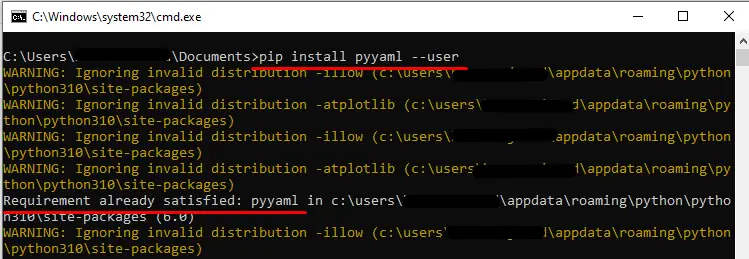

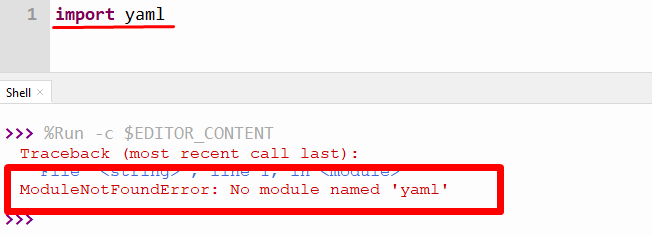



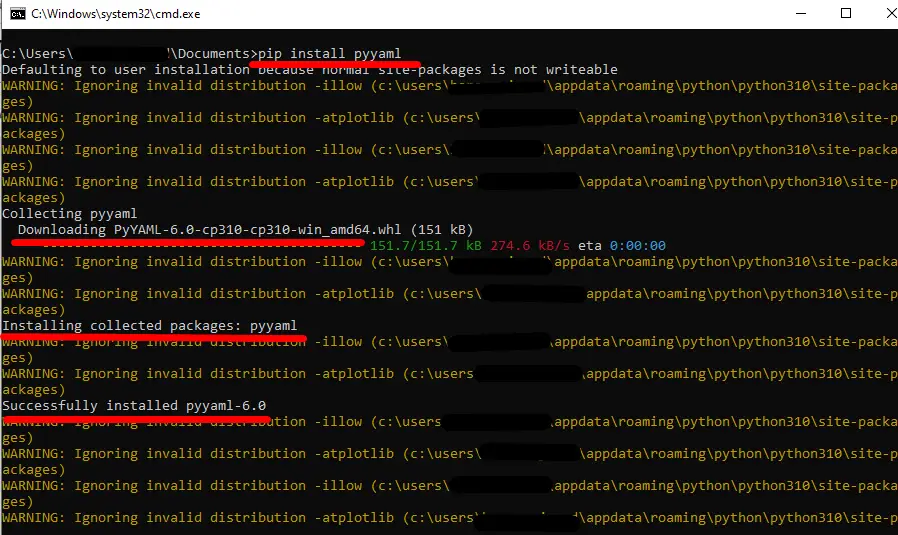

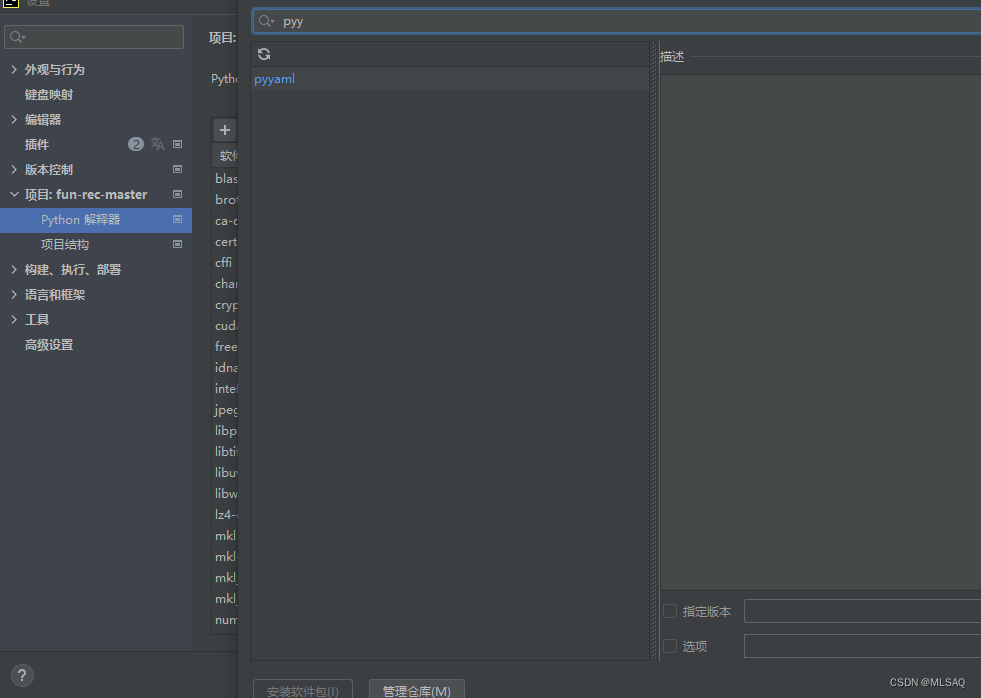
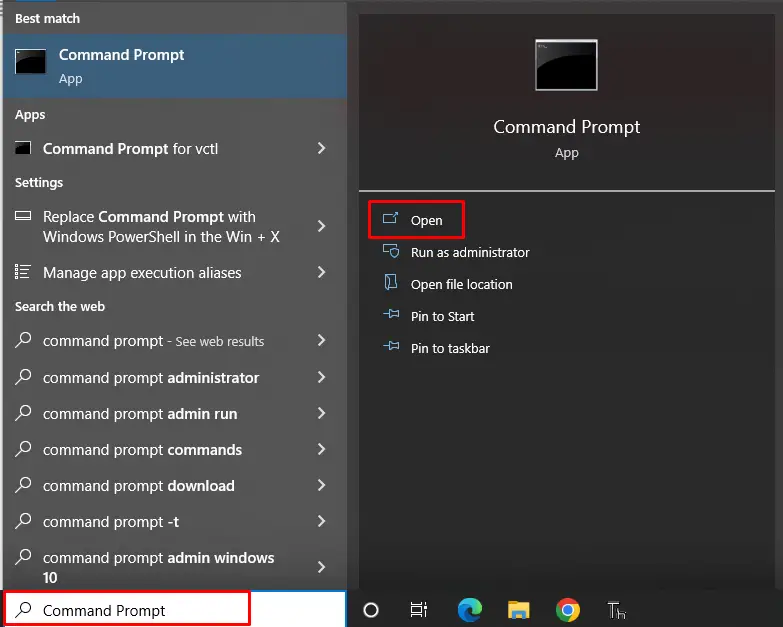

![Modulenotfounderror: no module named 'ruamel' [SOLVED] Modulenotfounderror: No Module Named 'Ruamel' [Solved]](https://itsourcecode.com/wp-content/uploads/2023/03/modulenotfounderror-no-module-named-ruamel.png)

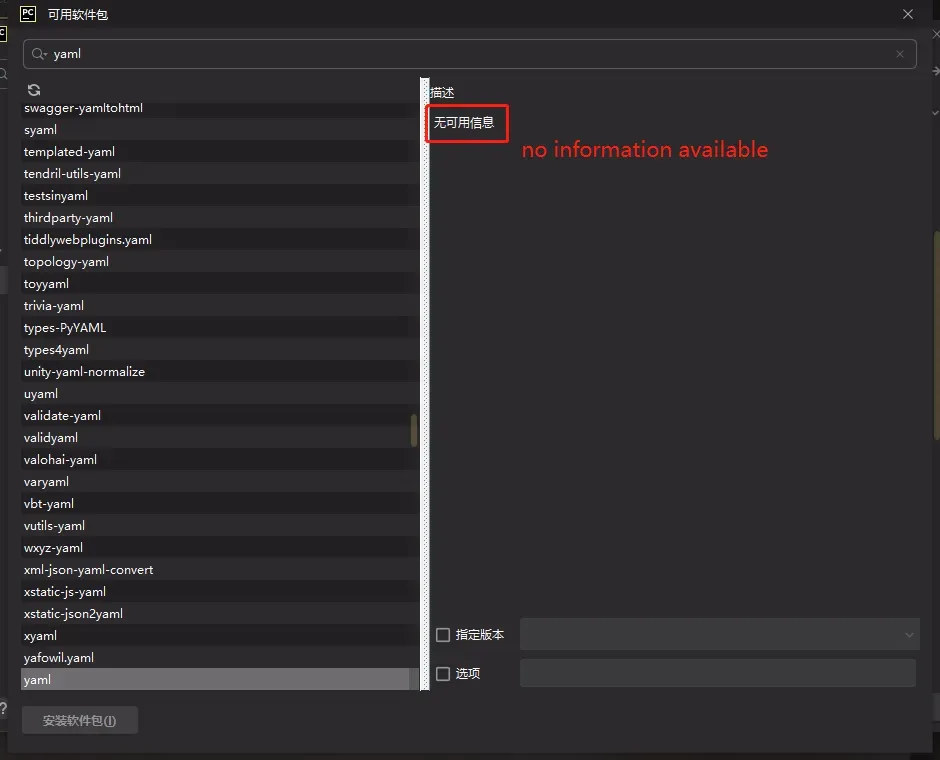






![SOLVED] ModuleNotFoundError: No Module Named 'yaml' Solved] Modulenotfounderror: No Module Named 'Yaml'](https://itsourcecode.com/wp-content/uploads/2022/12/modulenotfounderror-no-module-named-yaml-scaled.jpg)




![Solved] Python No Module Named Error Solved] Python No Module Named Error](https://itsourcecode.com/wp-content/uploads/2023/02/Python-No-Module-Named-Error.png)
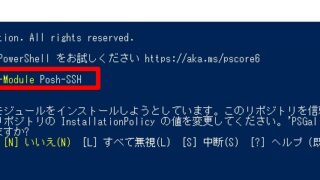




![modulenotfounderror: no module named 'gensim' [SOLVED] Modulenotfounderror: No Module Named 'Gensim' [Solved]](https://itsourcecode.com/wp-content/uploads/2023/03/modulenotfounderror-no-module-named-gensim.png)




![ModuleNotFoundError: no module named 'requests' [Solved in Python Django] Modulenotfounderror: No Module Named 'Requests' [Solved In Python Django]](https://www.freecodecamp.org/news/content/images/2023/04/Shittu-Olumide-ModuleNotFoundError-no-module-named--requests---Solved-in-Python-Django-.png)
![Modulenotfounderror no module named pymysql [SOLVED] Modulenotfounderror No Module Named Pymysql [Solved]](https://itsourcecode.com/wp-content/uploads/2023/03/modulenotfounderror-no-module-named-pymysql.png)



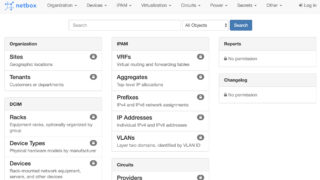
Article link: modulenotfounderror no module named yaml.
Learn more about the topic modulenotfounderror no module named yaml.
- ModuleNotFoundError: No module named ‘yaml’ in Python
- ImportError: No module named ‘yaml’ – Stack Overflow
- ModuleNotFoundError: No module named ‘yaml’ in Python
- ModuleNotFoundError: No module named ‘yaml’ #291 – GitHub
- How to Install pyyaml in Python? – Finxter
- Python YAML – Read, Write, Parse YAML – PYnative
- How to Install PyYAML on Windows? – GeeksforGeeks
- YAML Tutorial – A Comprehensive Guide To YAML Using Python
- How to fix ModuleNotFoundError: No module named ‘yaml’ in …
- How to solve ModuleNotFoundError: No module named ‘yaml’
- Modulenotfounderror: no module named ‘yaml’: Quick Solution
- Modulenotfounderror: No module named ‘yaml’ ( Solved )
- ImportError No module named ‘yaml’ in Python – Codeigo
See more: https://nhanvietluanvan.com/luat-hoc